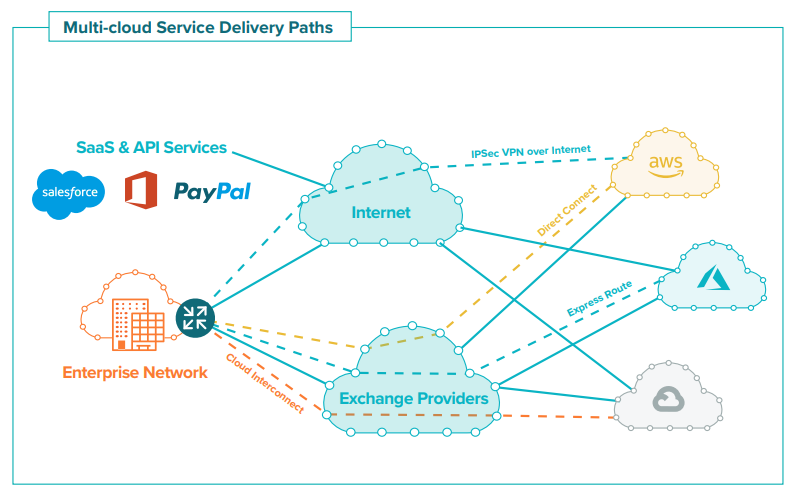The cloud saves time and money, provides reliability and access to information, and gives you the flexibility to do more, faster. And while cloud computing technology has been around for decades, businesses have never been more reliant on the cloud than they are today. A recent Nutanix Report found that 57% of large companies have already deployed a multi-cloud strategy, while 64% of organizations plan to operate multi-cloud environments in the next three years. What drives multi-cloud adoption varies from business to business, although redundancy and the prevention of vendor lock-in top the list of reasons why.
Behind the widespread adoption of multi-cloud are strategies that consider geography and developer preference. Widespread adoption of SaaS is also a driving force behind multi-cloud as providers leverage multiple IaaS and PaaS offerings in their networks. Add that the API economy is growing with evermore third-party functionality, ranging from payment gateways to databases to geolocations, and it's fair to say that interlocking connections abound in the multi-cloud.

Cloudy Vista
With multi-cloud adoption, businesses are now dependent on an interlocking system of cloud providers and a distributed web of third-party services for critical applications and hosting needs. Multi-cloud architectures are thus complex and can be difficult for Ops teams to gain visibility into the new environments. This limited visibility also makes it difficult for enterprises to respond effectively to incidents across environments or proactively monitor and identify issues.
Read the eBook on Managing Multi-Cloud
To delay dealing with the complexity of multi-cloud, some IT teams slow-rolled their cloud migrations. But with the en bloc transition to hybrid work, as indicated by the 100 percent rise in cloud traffic between February and April of 2020, the ability to see the many dependencies that fall outside the corporate perimeter has become a requirement for business continuity.
Of the monitoring tools on the market today, many flatline when managing multi-cloud environments, such as traditional monitoring that relies on packet capture or NetFlow data. On the other hand, Cloud Watch services fail to capture the hundreds of dependencies that flow to, from, and between your cloud providers, which leaves a host of blind spots that may impact the digital experience. And with service providers reluctant to admit fault without verifiable evidence, which 50 percent of NetOps teams have a hard time finding, you need the most comprehensive network-agnostic intelligence you can find if you want to move past tier-one support.
Bridging the Cloud
A better solution to bridging the monitoring gap for multi-cloud is end-to-end visibility. And ThousandEyes provides those deep views into major public cloud providers from pre-provisioned vantage points located inside their networks. For a regional or even hyperlocal understanding of cloud performance, we also have Cloud Agent vantage points in 200 cities worldwide that add to the billion measurements per day that ThousandEyes streams into serviceable intelligence.
The caliber of customer relationships and workforce productivity at your enterprise depends on the digital experience you can deliver. And ThousandEyes helps you do that by providing Ops teams with bidirectional network tests that collect performance metrics on an ongoing basis. Teams can set up notifications for when performance deviates from established baselines. Moreover, the time-captured correlated insights that ThousandEyes provides are actionable and easily sharable with cloud providers (as well as other third parties in the digital supply chain) to expedite troubleshooting and MTTR.
Multi-cloud in Financial Services
A major financial institution recently announced shifting from private data centers to the public cloud, specifically to embrace multi-cloud. And although banking has been slower than other industries to move to the cloud due to regulatory and security concerns, it is now catching up to the two-thirds of enterprise-level companies already using multiple clouds.
A leader in the move to the cloud was Credit Suisse, which selected ThousandEyes to monitor and analyze application experience from every cloud to every user, both inside its corporate network and throughout the global Internet.
"The dominance of cloud is reshaping enterprise IT and increasing reliance on the Internet and networks outside of the traditional control perimeter," said Laura Barrowman, Group Technology Officer and Group Chief Information Security Officer for Credit Suisse AG. "Credit Suisse recognizes ThousandEyes for being at the forefront of empowering organizations to take back control and drive organizational successes by enabling their customers to manage an end-to-end digital experience and adopt a data-driven approach to migrating to the cloud."
Eliminating Downtime
When we talk about multi-cloud management success, we mean the outcomes that will make a difference to customers and employees. These outcomes include faster MTTI or MTTR during and after cloud migration, reduced or eliminated downtime, and seamless digital experiences. ThousandEyes delivers those benefits to most major financial institutions in the U.S., Europe and Australia. And with their escalation processes eased and vast networks understood, these enterprises can focus on what they do best: provide best-in-class digital experiences to their financial services customers.